Heading 1
Heading 2
Heading 3
Heading 4
Heading 5
Heading 6
Lorem ipsum dolor sit amet, consectetur adipiscing elit, sed do eiusmod tempor incididunt ut labore et dolore magna aliqua. Ut enim ad minim veniam, quis nostrud exercitation ullamco laboris nisi ut aliquip ex ea commodo consequat. Duis aute irure dolor in reprehenderit in voluptate velit esse cillum dolore eu fugiat nulla pariatur.
Block quote
Ordered list
- Item 1
- Item 2
- Item 3
Unordered list
- Item A
- Item B
- Item C
Bold text
Emphasis
Superscript
Subscript

Your top 20% of partners close deals without you—and the remaining 80%?
They pull you into every call, lose case studies in their inbox, and can't remember where you keep product materials. These ad hoc requests end with you spending hours as a human help desk instead of building your partner program.
Channel enablement tools fix exactly this. They help your partners sell your product independently—without pulling you into every demo, content request, or product question.
This guide covers 11 platforms organized by the partner channel enablement bottleneck you are facing.
TL;DR: Best channel enablement platforms
Combinations our customers use to be successful in channel partner sales: 👇
- Startup (0-20 partners): Storylane + Guru = $2K/month
- Growth (20-100 partners): Add Highspot + PartnerStack = $5-10K/month
- Enterprise (100+ partners): Add PRM infrastructure (Impartner, Introw, or Allbound)
The free tools trap that most channel managers fall into
Walk into any channel team and you'll find the same setup: Google Drive for content, Salesforce for deal tracking, 5-minute Looms and 30-minute Zooms for demos. Free, familiar, and it feels like it's working.
Until you calculate what it's actually costing you.
- You're spending 15+ hours weekly doing the same demos for different partners.
- Google Drive doesn't track which partners view your materials or what content drives deals.
- Partners create their own decks with outdated pricing.
- You can't tell which of your 50 partners are active versus ghost partners who registered once and disappeared.
Partners want self-service tools that make selling easier. But free alternatives create dependency instead of independence.
The 12 best channel enablement platforms
Category 1: Demo tools for channel partner enablement
Partners who can't demonstrate your product can't sell it. Live demos mean calendar Tetris with your sales engineers, and by then, prospects have moved to a competitor who made it easier.
1. Storylane - Interactive demo platform for channel partners
The bottleneck: You're doing 12-15 partner demos weekly—partners can't show your product independently.
Storylane is the leading demo automation for B2B SaaS channel enablement. It enables you and your partners to build code-free interactive demos that they can customize and share with prospects—no engineering resources, no hand-holding needed.
How Storylane works for channel enablement:
- Capture your product once, and AI generates clickable demos with scripts and voiceovers
- Partners personalize demos in 2 minutes, add the prospect’s company name, logos, and industry-relevant demo data via dynamic tokens.
- Prospects explore demos at their own pace while you track engagement (who watched what, for how long)
- Deliver demos that never break on calls, or send as leave-behinds for champions to get internal buy-in
What this replaces: Most channel teams either pull you into 12-15 partner demos weekly (making you the bottleneck) or partners use PowerPoint decks with screenshots that don't convert. Storylane gives partners the ability to demo independently while you maintain visibility and control.
Pricing: Pricing: Free plan available; $480/year for screenshots + video demos, $6,000/year for HTML demos
Category 2: Content management platforms for channel partners
Great sales content is useless if partners can't find it in 30 seconds. These platforms create a single source of truth for all partner-facing materials.
2. Seismic - Enterprise sales content management
The bottleneck: Partners spend 20-45 minutes hunting for content, then give up and create their own (often wrong) materials.
Seismic is the enterprise standard for sales content management in channel partner programs. It centralizes all sales content—decks, case studies, battlecards, ROI calculators—in one searchable library with version control. Partners always have the latest, approved materials.
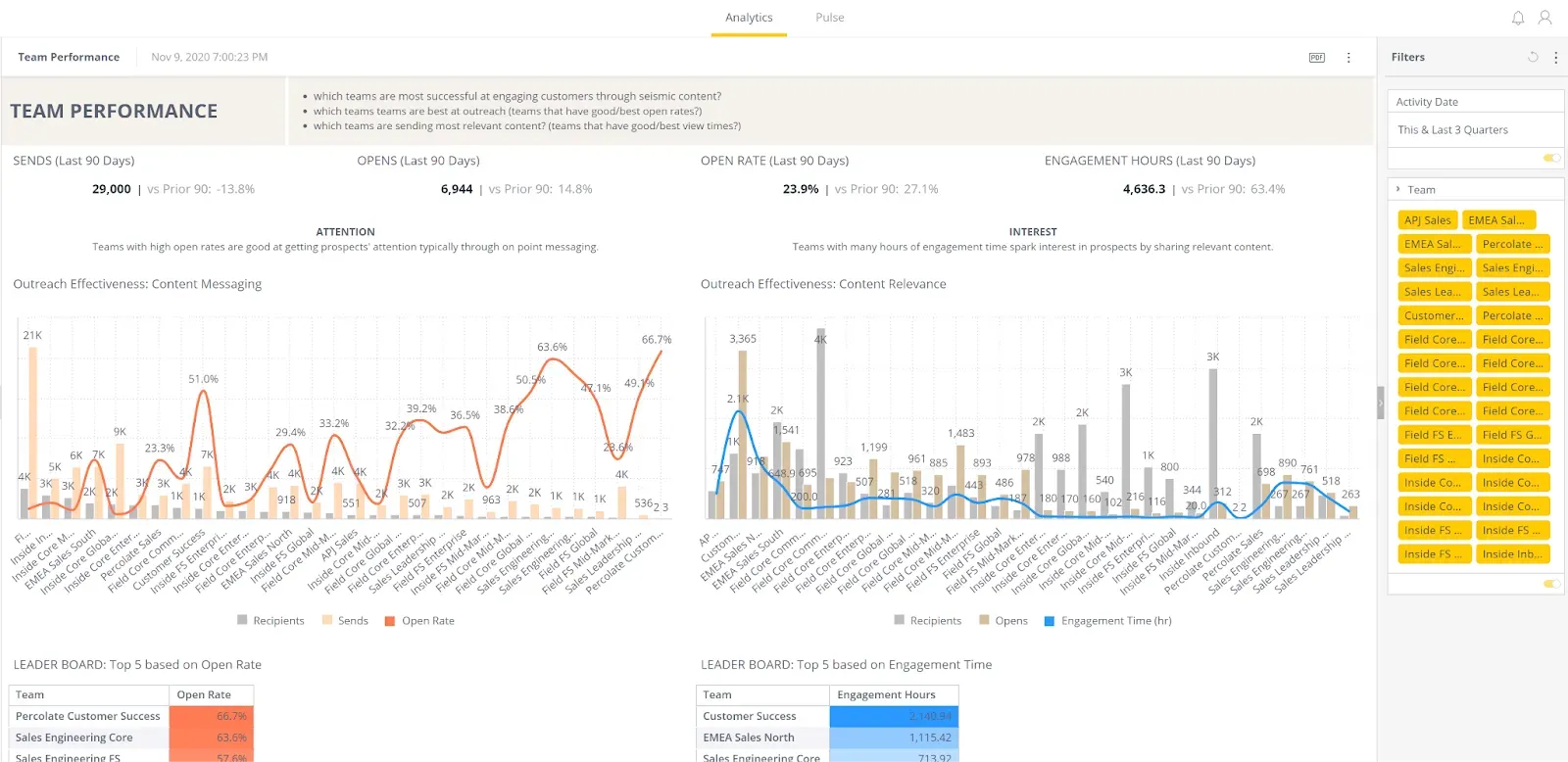
How Seismic works for channel enablement:
- Powerful search finds content in seconds, not 30 minutes of digging through Google Drive folders
- Content analytics show what partners actually use and which assets correlate with closed deals
- Version control prevents outdated materials with automatic content expiration alerts
- CRM integration surfaces relevant content directly in Salesforce when partners are working on deals
What this replaces: Most teams use shared Google Drive folders organized by content type. Partners spend 20-45 minutes hunting for specific materials, can't tell which version is current, and often create their own decks with outdated pricing or incorrect claims. Seismic makes you the easiest vendor to sell because partners find materials in 30 seconds.
Pricing: Custom enterprise pricing, Professional Edition runs about $630/user/year.
3. Highspot - Sales enablement platform with built-in analytics
The bottleneck: You're creating sales content blindly—no idea which assets partners actually use or which materials drive deals.
Highspot combines content management with analytics, showing which materials correlate with closed deals. Partners get searchable content plus guided selling recommendations on what to use when.
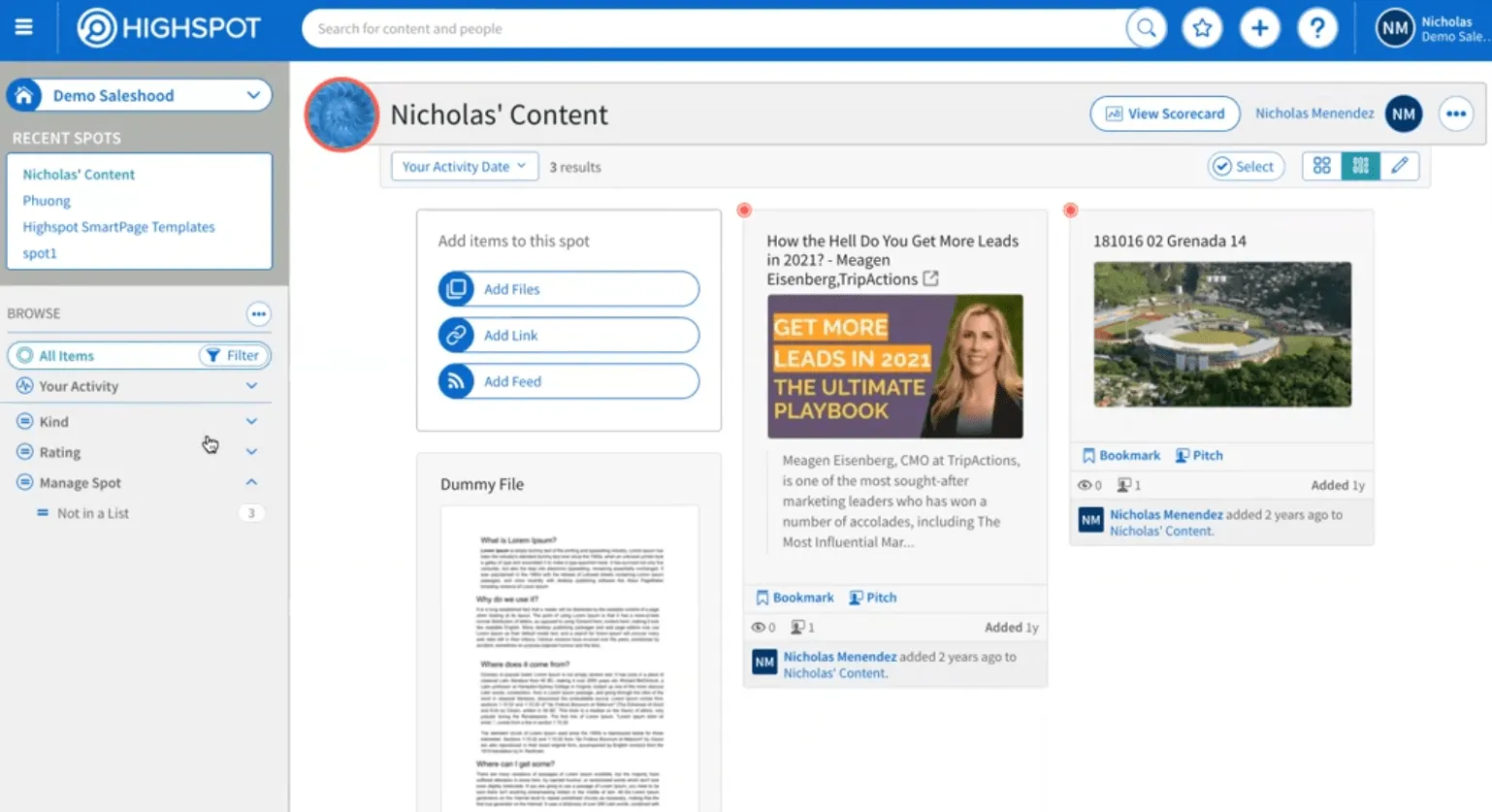
How Highspot works for channel enablement:
- Find content in seconds with an AI-powered search that understands intent, not just keywords
- See what actually drives revenue with analytics showing which assets partners use and which correlate with closed deals
- Guide partners on what to share with pitch recommendations based on deal stage and buyer persona
- Integrate with your CRM so relevant content surfaces automatically when partners work on deals in Salesforce
What this replaces: Google Drive folders where you upload content and hope partners use it. You have no visibility into which battlecard actually helps close deals versus which case study nobody opens. Highspot turns content creation from guesswork into a data-driven process.
Pricing: Custom quotes based on team size and features, with average contract value ~$76,000/year
Category 3: Partner training & knowledge management
Partners represent multiple vendors. They need product knowledge in two forms: structured learning for onboarding, and instant answers for daily questions.
4. WorkRamp - Partner training & learning management system
The bottleneck: New partners take 6+ months to close their first deal because they don't deeply understand your product.
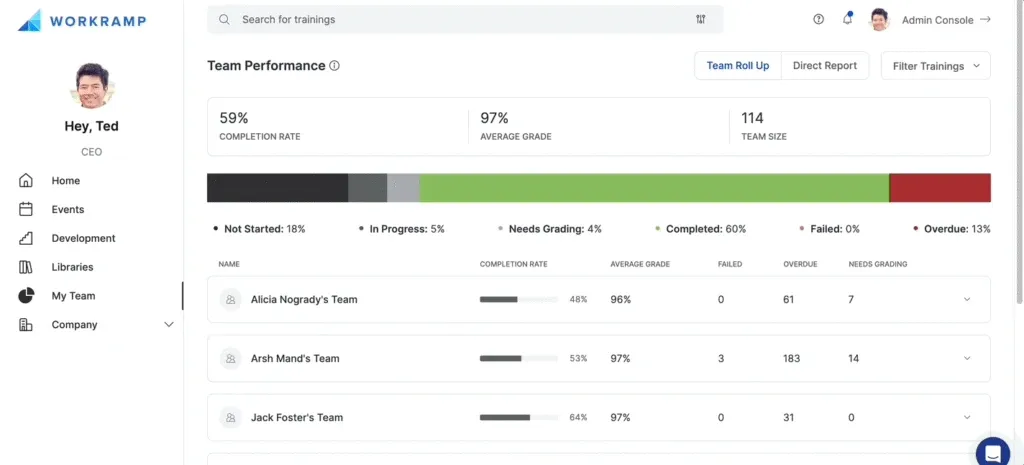
How WorkRamp works for channel enablement:
- Build learning paths by role or product so partners get relevant training, not generic overviews
- Gate partner activities until training is complete, with Salesforce integration that blocks deal registration access until certification
- Track compliance and certification status across your entire partner network in real-time
- Assess actual knowledge retention with quizzes and assessments, not just "completed the video" checkboxes
Pricing: Custom pricing starting at ~$25/user/year (Median buyer pays $18,437/per year)
5. Guru - AI-powered knowledge management for partners
The bottleneck: Partners ask you the same 20 questions repeatedly—"What's our healthcare differentiator?" "How does pricing work?" "What's our SOC 2 stance?"
Guru integrates directly into Slack, email, and browsers to deliver instant AI-powered answers from your verified knowledge base. No digging through training modules or waiting 3 hours for you to respond.
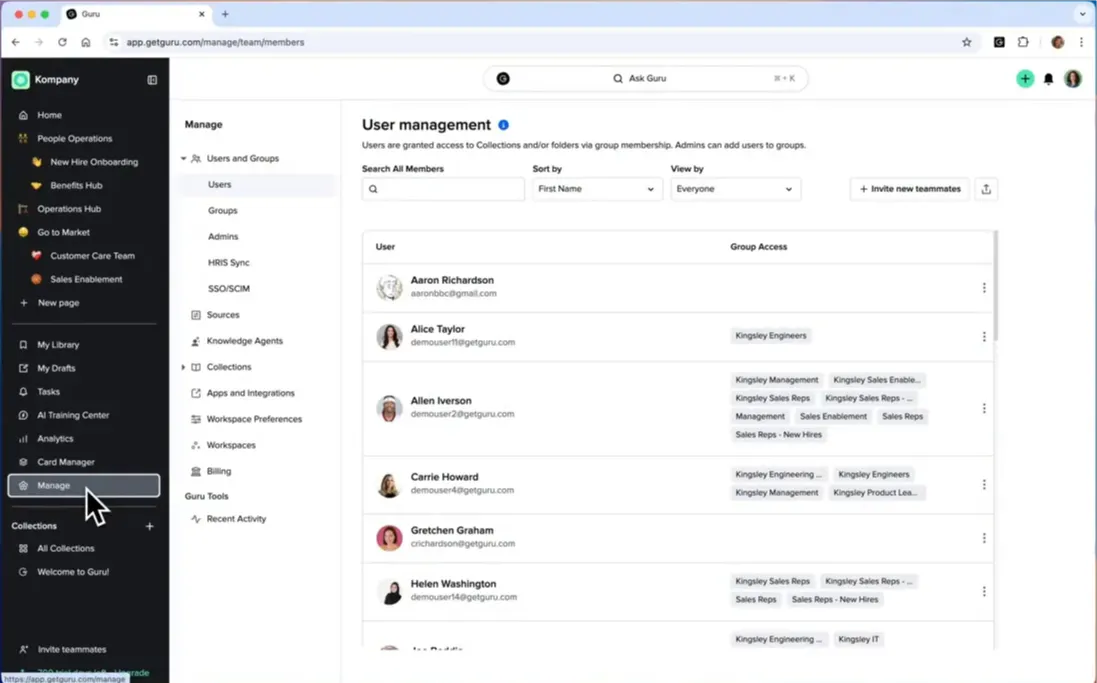
How Guru works for channel enablement:
- Answer questions in 10 seconds with AI that surfaces exact answers from your verified knowledge base
- Works where partners already are via browser extension, Slack integration, and email—no separate login required
- Highlight text to get context instantly so partners on prospect calls can quickly look up API rate limits or security specs
- Reduce repetitive Slack messages by 60% as partners find answers themselves instead of pinging you
What this replaces: Partners Slack you with questions, or you create a static FAQ doc they never read. Every "quick question" interrupts your work and can take 2-4 hours to respond. Partners ask the same questions repeatedly because they can't search previous answers.
Pricing: Starts at $25/user/month + free trial available.
Bottom line: Questions during live prospect calls go unanswered, making partners lose credibility. Guru can help bridge that gap.
Category 4: Partner performance tracking and ecosystem intelligence tools
You can't improve what you can't measure. These platforms show which partners are actually working versus just taking up space in your CRM.
6. PartnerStack - Partner marketplace & performance tracking
The bottleneck: You have no idea which partners are active, which are generating pipeline, or who deserves more of your attention.
PartnerStack tracks partner activity, automates payouts, and provides performance dashboards. It also offers a marketplace where partners can discover you and apply to your partner program.
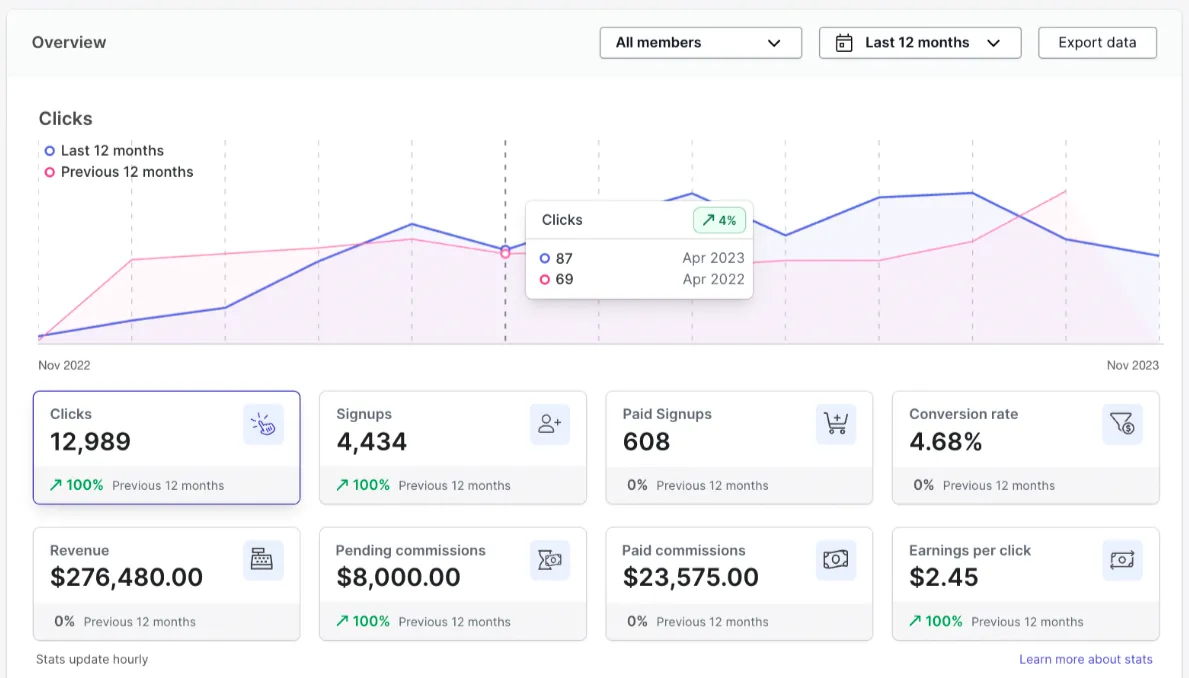
How PartnerStack works for channel enablement:
- See exactly who's working with performance dashboards, showing active partners versus ghost partners draining resources
- Automate commission payouts with integrations to Stripe and Salesforce for revenue sharing based on actual performance
- Recruit partners through the marketplace where thousands of partners actively look for products to sell—skip cold outreach
- Track time-to-first-deal for each partner so you can identify at-risk partners early and focus enablement where it matters
What this replaces: Manual tracking in spreadsheets. You can't see which partners logged in this month, engagement trends before partners churn, or comparative performance across verticals. Without visibility, you spend equal time on all 50 partners when data would show 10 partners drive 85% of revenue.
Pricing: Performance-based pricing (~3% of partner-sourced revenue)
7. Crossbeam - Partner ecosystem intelligence & account mapping
The bottleneck: You don't know which partners are already working with your target accounts, so you're missing co-selling opportunities sitting right in front of you.
Crossbeam connects your CRM with partners' CRMs to show account overlap. See which partners already have relationships with your prospects, then co-sell together instead of competing or duplicating efforts.
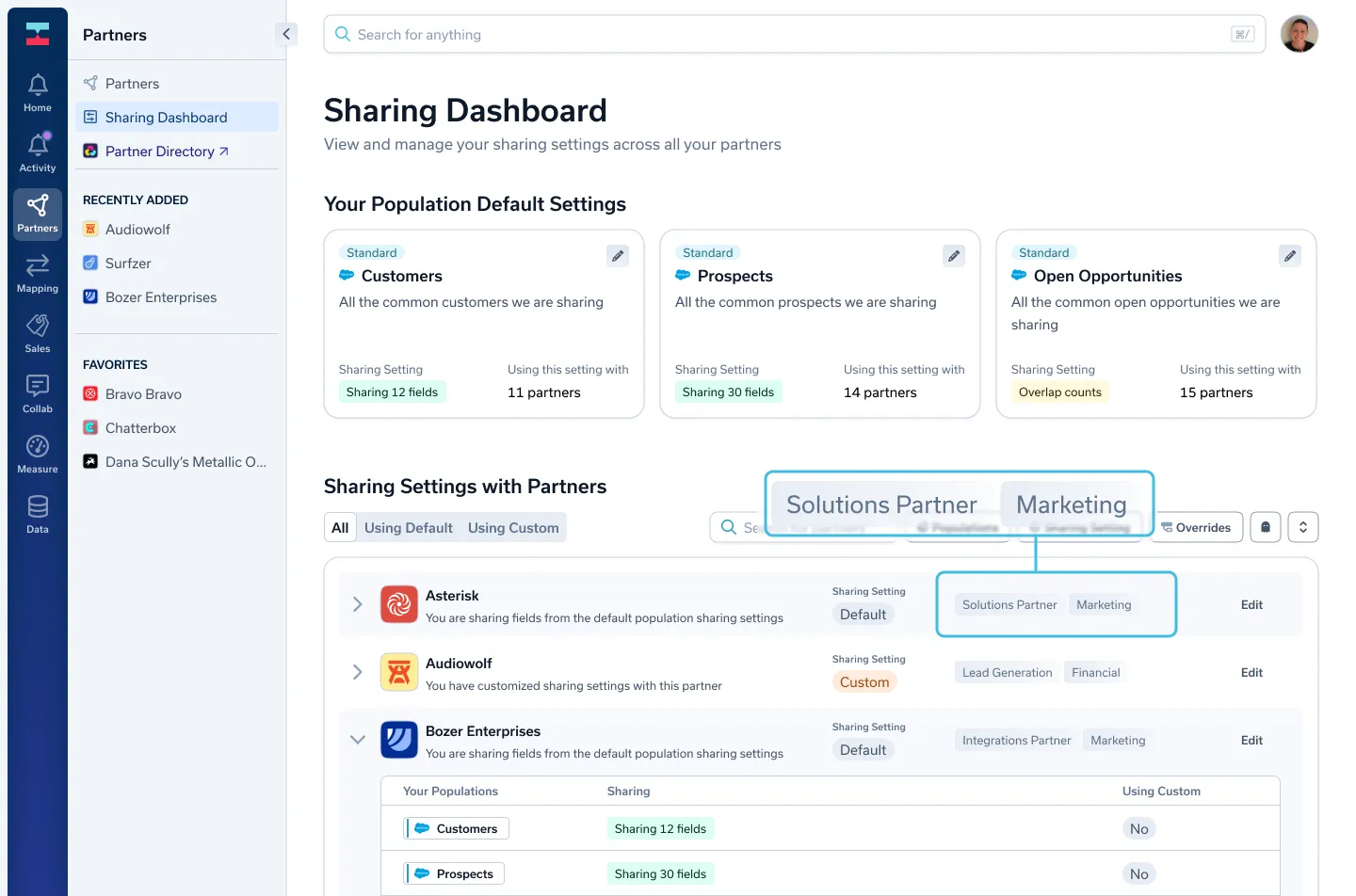
How Crossbeam works for channel enablement:
- Map account overlap securely by connecting CRMs without exposing sensitive data—see shared accounts, not competitor pipelines
- Get alerts when partners engage your targets so you can coordinate co-selling before prospects make decisions
- Identify which partnerships actually generate revenue with ecosystem analytics showing partner contribution to closed deals
- Turn cold outreach into warm introductions by leveraging partners who already have relationships with your ideal customers
Pricing: Custom enterprise pricing.
If you have 10-20 strategic partners who should be co-selling but aren't (because nobody knows whose accounts are), Crossbeam fixes this. Not necessary for early-stage partner programs—add it when co-selling becomes your growth strategy.
Category 5: Partner relationship management platforms (PRM)
When you hit 50-100+ partners, you need operational infrastructure: deal registration, MDF management, partner onboarding workflows. PRMs provide this backbone.
8. Impartner - Enterprise PRM with through-channel marketing
The bottleneck: You need enterprise-grade PRM with sophisticated through-channel marketing automation, not just basic partner portal functionality.
Impartner provides comprehensive PRM plus through-channel marketing automation (TCMA), letting you create and execute co-branded marketing campaigns directly through your partners. Better suited for complex ecosystems with multiple partner types (resellers, distributors, MSPs, system integrators).
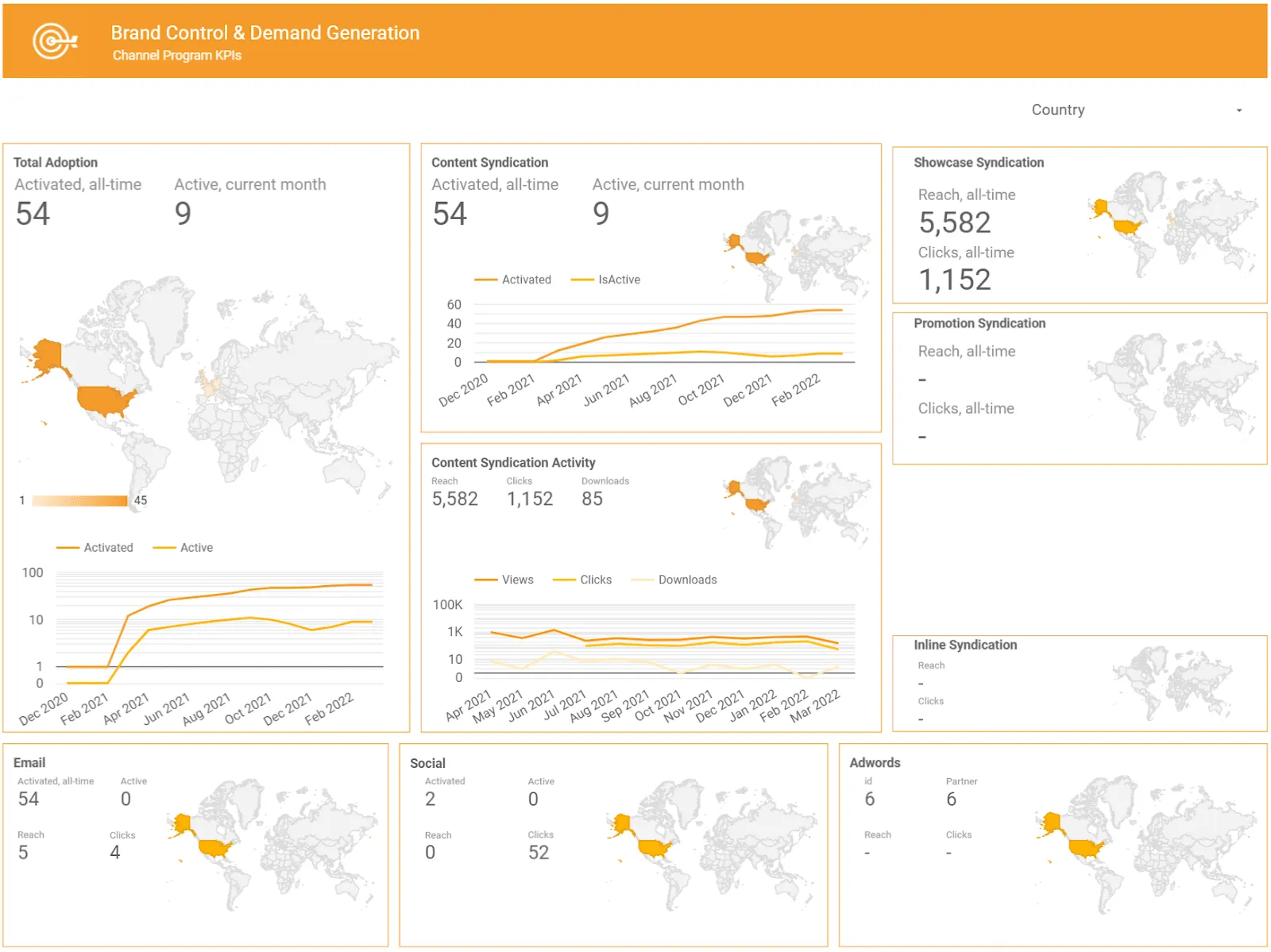
How Impartner works for channel enablement:
- Automate deal registration workflows with customizable approval rules and automated routing to eliminate manual processing
- Create co-branded marketing campaigns that partners can deploy with ready-to-use assets and performance tracking across your ecosystem
- Manage MDF requests and reimbursements in one system instead of spreadsheets and email threads
- Support multiple partner types with different portal experiences for resellers, distributors, MSPs, and OEMs in one platform
What this replaces: Basic PRMs that only handle deal registration and content distribution. If you're running sophisticated marketing programs through partners or managing multiple partner types with different needs, generic PRMs don't scale. According to Forrester's Total Economic Impact study, companies using Impartner reported 296% ROI and 50% increase in partner-sourced deals within three years.
Pricing: Custom enterprise pricing, starting at $2,000/month ($24,000/year minimum), depending on partner count and modules.
Bottom line: Impartner is the enterprise choice when you need PRM plus sophisticated marketing automation.
9. Introw - Quick PRM implementation with deep CRM integration
The bottleneck: You need a partner portal now, not in 6 months—and you want it to sync perfectly with your existing CRM without complex integration projects.
Introw deploys functional partner portals in days with native HubSpot and Salesforce integration. Your CRM stays as the single source of truth—no separate database, no sync delays, no duplicate data entry.

How Introw works for channel enablement:
- Deploy in days with no-code setup using pre-built templates that automatically pull data from your CRM
- Sync deals and contacts in real-time so changes in Salesforce or HubSpot reflect in the partner portal within minutes
- Automate partner engagement via Slack so updates reach partners where they already work, not in a portal they rarely check
- Track commissions with partner visibility showing partners exactly what they've earned and when payments process
What this replaces: Traditional PRMs take 3-6 months to implement and require dedicated resources. Introw uses pre-built templates instead of custom builds. Partners see their deals, pipeline, and performance without you manually updating anything. The CRM integration eliminates data sync issues that plague other PRM implementations.
Pricing: $669/month; Free tier available for 1 partner.
Bottom line: If implementation speed matters more than infinite customization, Introw gets you operational in a week instead of months. Choose Impartner when you need advanced workflow complexity and have 6 months to spare.
10. Salesforce PRM - Native PRM for Salesforce users
You're already on Salesforce Sales Cloud, and buying a separate PRM creates integration headaches, duplicate data, and extra vendor management.
Salesforce PRM (part of Experience Cloud) provides partner portal capabilities built directly into your existing Salesforce environment. Partners access the same system your sales team uses—no separate login, no data sync issues.
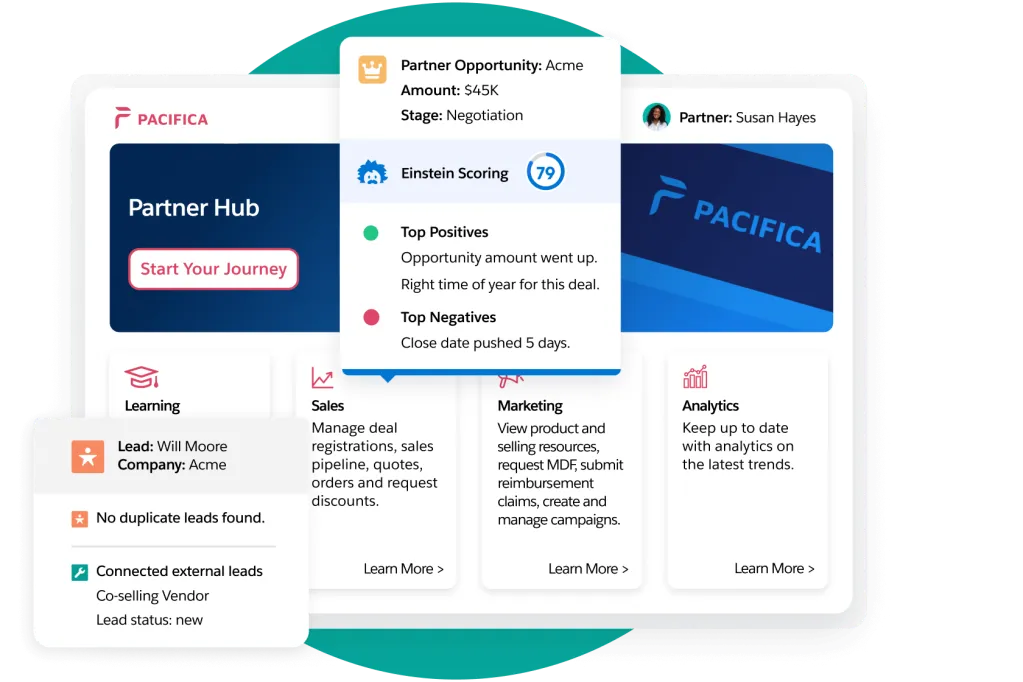
How Salesforce PRM works for channel enablement:
- Automate deal registration and lead routing within Salesforce so partners submit deals where your team already works
- Surface AI-powered insights showing partners which opportunities to prioritize based on likelihood to close
- Request MDF and track approvals without leaving Salesforce—marketing fund workflows live in the same system as deals
- Enable co-selling across CRMs with visibility into partner activity for complex enterprise sales motions
What this replaces: Buying separate PRM software that requires complex Salesforce integration, duplicate data entry, and managing another vendor relationship. However, "built-in" doesn't mean "plug-and-play"—you still need a Salesforce admin or consultant to configure Experience Cloud properly. The portal requires technical expertise to customize.
Pricing: $25/user/month for basic PRM (on top of Sales Cloud). Partner Ecosystem Management adds advanced features for $50/user/month.
Note: Works fine if you're already on Salesforce, have admin resources, and prioritize keeping everything in one ecosystem. If you're not on Salesforce or need advanced partner marketing capabilities, dedicated PRMs (Impartner, Introw) can be more intuitive choices.
11. Allbound - All-in-one partner relationship management platform
The bottleneck: Everything is scattered—deal registration in Salesforce, content in Dropbox, training in email, MDF tracking in spreadsheets. You need one centralized partner portal.
Allbound provides comprehensive PRM with partner portals, deal registration, MDF management, content libraries, basic training modules, and partner communication tools in one platform.
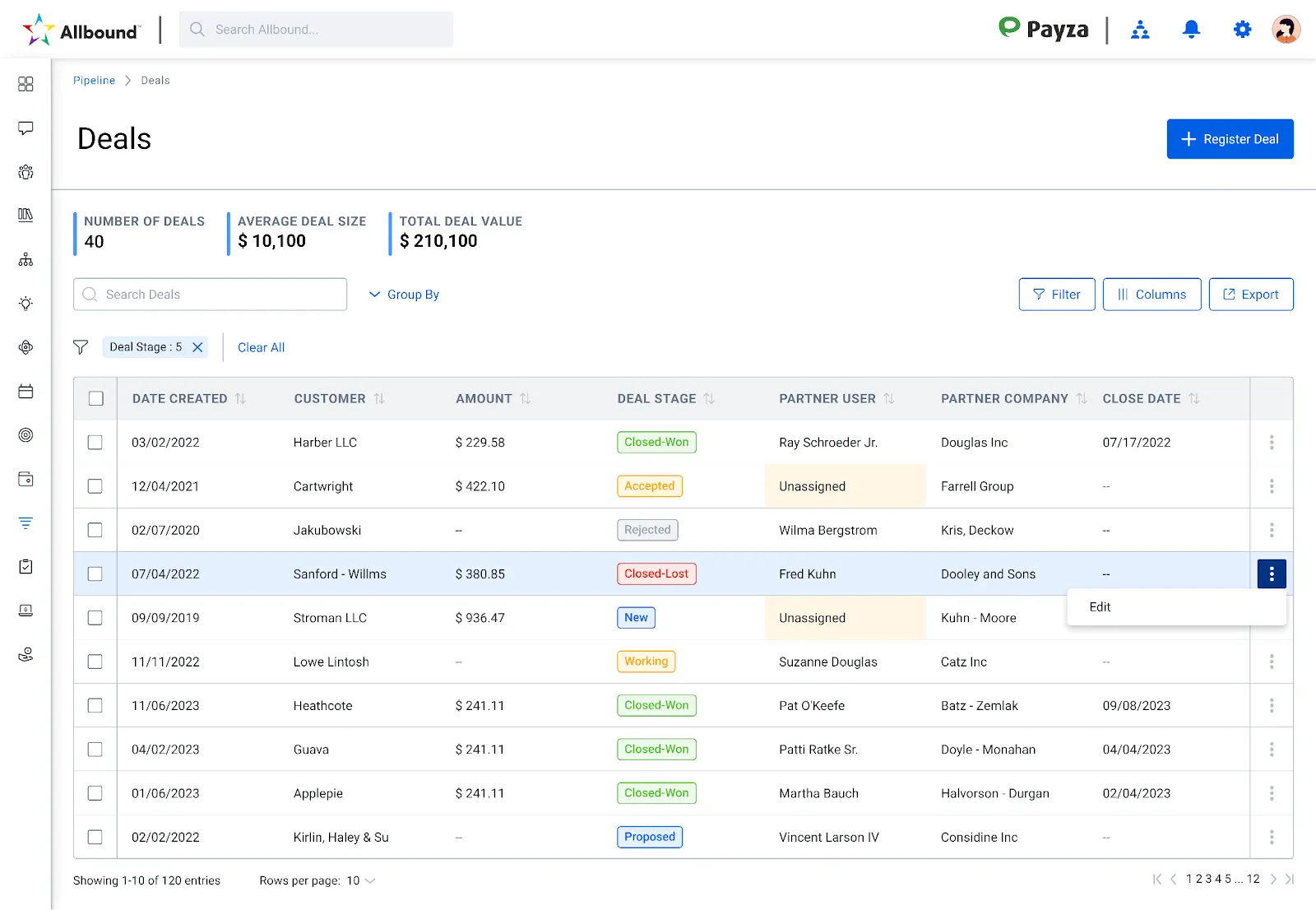
How Allbound works for channel enablement:
- Centralize deal registration workflows with auto-approval rules, eliminating manual processing and email chains
- Manage MDF requests and reimbursements with built-in tracking from request through approval to payment
- Distribute content from one library so partners can access approved materials instead of creating their own versions
- Track partner performance with dashboards showing engagement, certification status, and deal contribution
What this replaces: Operational chaos when you're managing 50+ partners across multiple disconnected tools. However, Allbound does many things adequately, nothing exceptionally. Its training is basic (WorkRamp is better), content management is functional but not sophisticated (Seismic/Highspot are better), and it has zero demo capabilities (you'll still need Storylane).
Pricing: Custom pricing, ~$3495/month depending on partner count and modules.
Which channel enablement tool should you start with?
Choosing the right channel enablement tools for your sales process can get overwhelming. Our advice? Keep it simple and start with whichever bottleneck is actively killing deals today.
Ending note:
Most channel managers live in reactive mode without a partner enablement tool. Partners need a demo? “I'll do it!” Can't find the case study?” I'll send it!” Have a product question? “I'll answer it!”
Every manual intervention teaches partners to depend on you. Escape this trap.
- Give your partners interactive demos they can run themselves (Storylane).
- A searchable content library, not email attachments (Seismic, Highspot).
- A knowledge base that answers instantly, not in 3 hours when you see their Slack (Guru).
- Performance tracking so you know who's actually working (PartnerStack, Crossbeam).
FAQ: Best channel enablement platforms
Q. What's the difference between channel enablement and PRM?
Enablement helps partners sell better (demos, content, training). PRMs manage operations at scale (deal registration, MDF, workflows). Both are valuable—start with enablement when building your channel, add PRM when managing 50+ partners.
Q: Do I need a PRM if I already have Salesforce?
If you're already on Salesforce, are comfortable using it, and have admin resources, Salesforce PRM can be a fine platform to use. But Salesforce PRM doesn't solve demo dependency (you still need Storylane), content chaos (Seismic/Highspot), or repetitive questions (Guru). Most teams need 2-3 specialized tools + PRM, not PRM alone.
Q. Seismic vs Highspot—which one for channel partners?
Highspot for most programs (better analytics, easier to use, $30-40K/year). Seismic when you need enterprise compliance and have 100+ partners ($50K+/year).
Q. Which channel enablement platform should I start with?
Start with your biggest bottleneck. For most B2B SaaS companies, that's demo enablement—partners who can't show your product can't close deals. Add content and knowledge tools in months 2-6, then PRM when you hit 50+ partners.
Q. How much does a channel enablement platform cost?
Demo platforms: $40-100/user/month. Knowledge bases: $15/user/month. Content management and PRMs: $30K-150K+ annually. Most programs spend $2-3K/month in year one, scaling to $15-25K/month.
Q: Should I buy channel enablement tools before I have partners?
No. Build your first 5-10 partnerships manually to learn what actually breaks. Then buy tools to fix the specific bottlenecks you've experienced.
Stop the weekly demo madness today! Create your first Storylane demo in 2 minutes and enable independent selling for your partners.
Heading 1
Heading 2
Heading 3
Heading 4
Heading 5
Heading 6
Lorem ipsum dolor sit amet, consectetur adipiscing elit, sed do eiusmod tempor incididunt ut labore et dolore magna aliqua. Ut enim ad minim veniam, quis nostrud exercitation ullamco laboris nisi ut aliquip ex ea commodo consequat. Duis aute irure dolor in reprehenderit in voluptate velit esse cillum dolore eu fugiat nulla pariatur.
Block quote
Ordered list
- Item 1
- Item 2
- Item 3
Unordered list
- Item A
- Item B
- Item C
Bold text
Emphasis
Superscript
Subscript









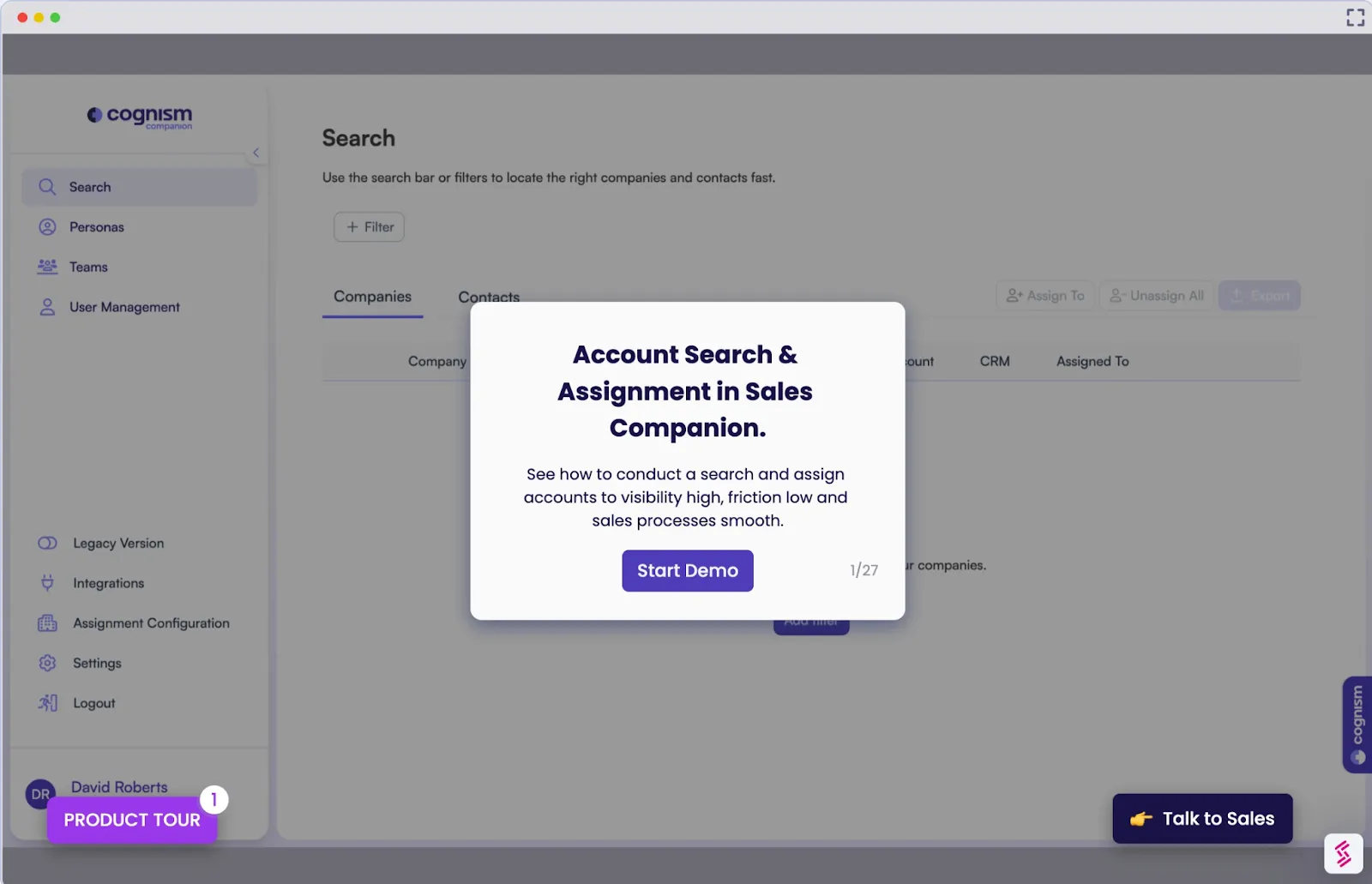
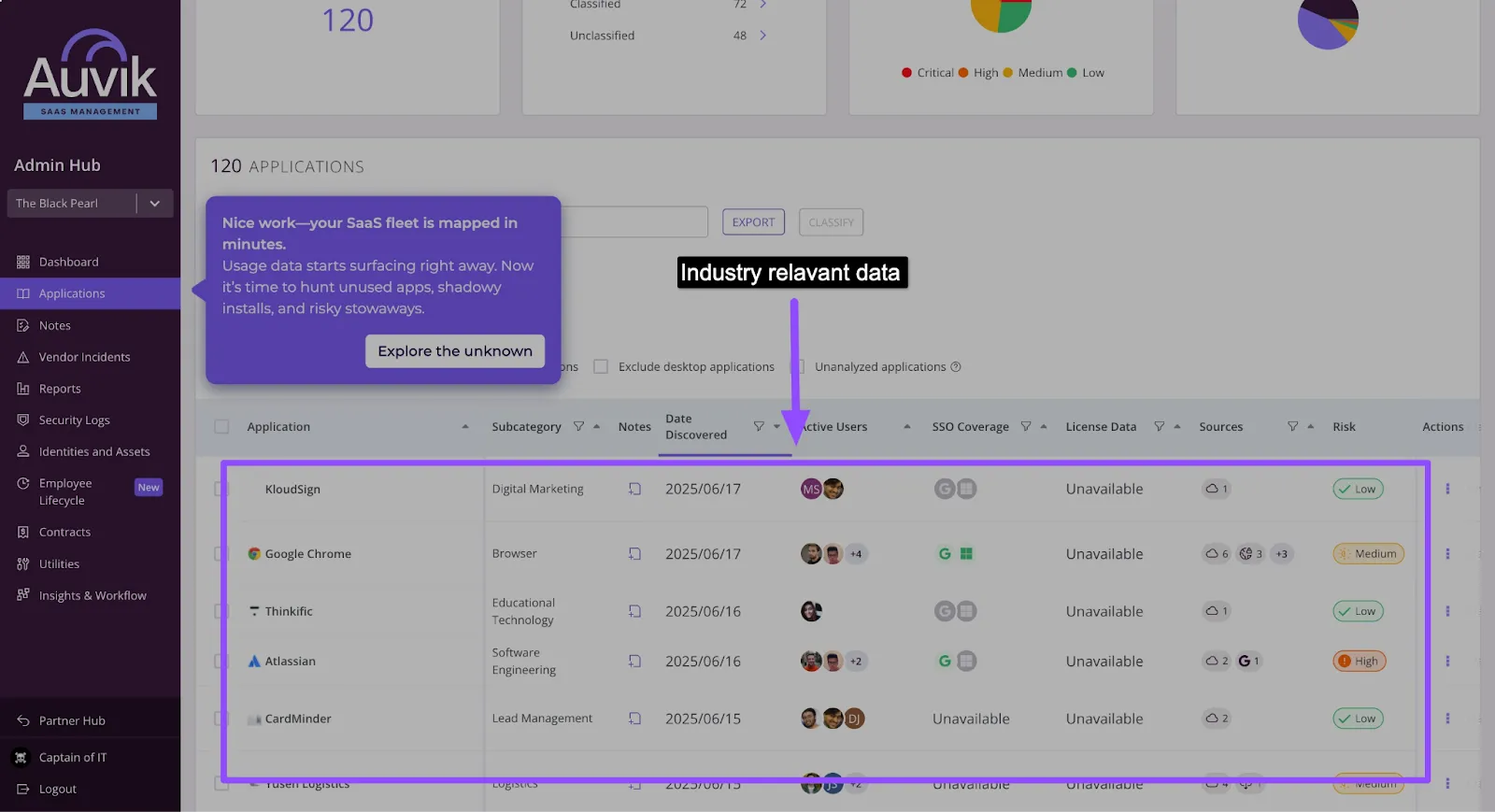
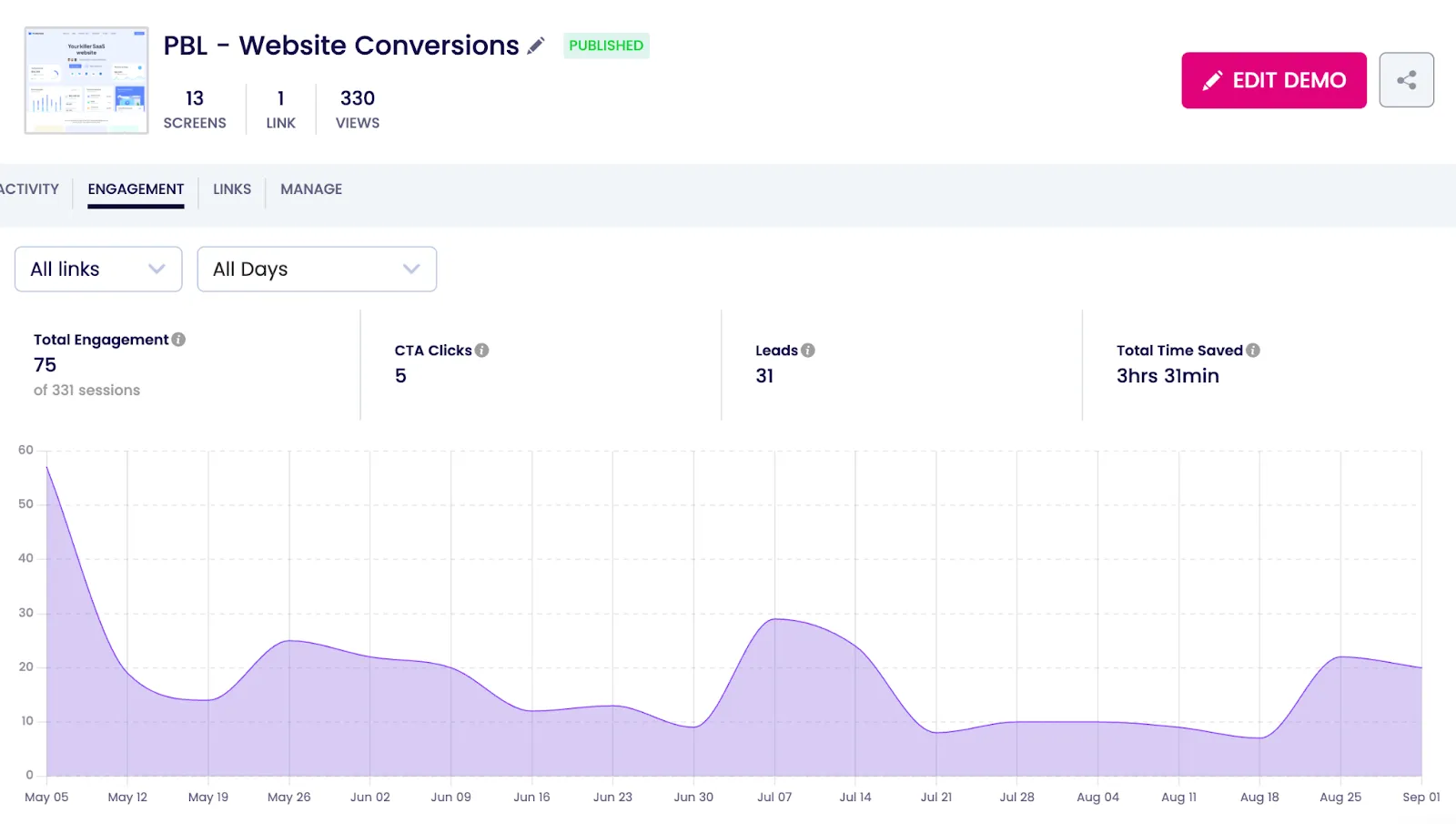
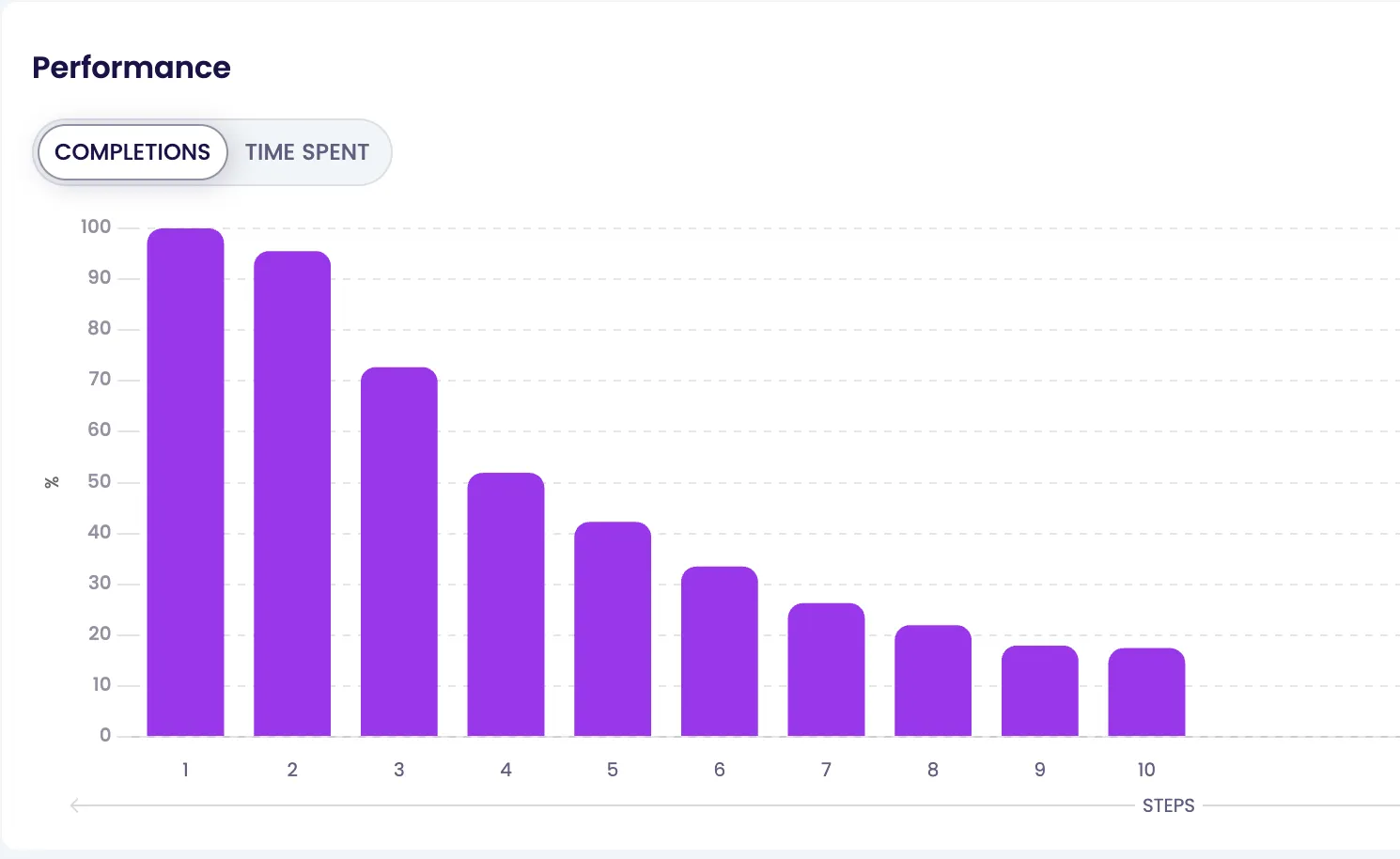
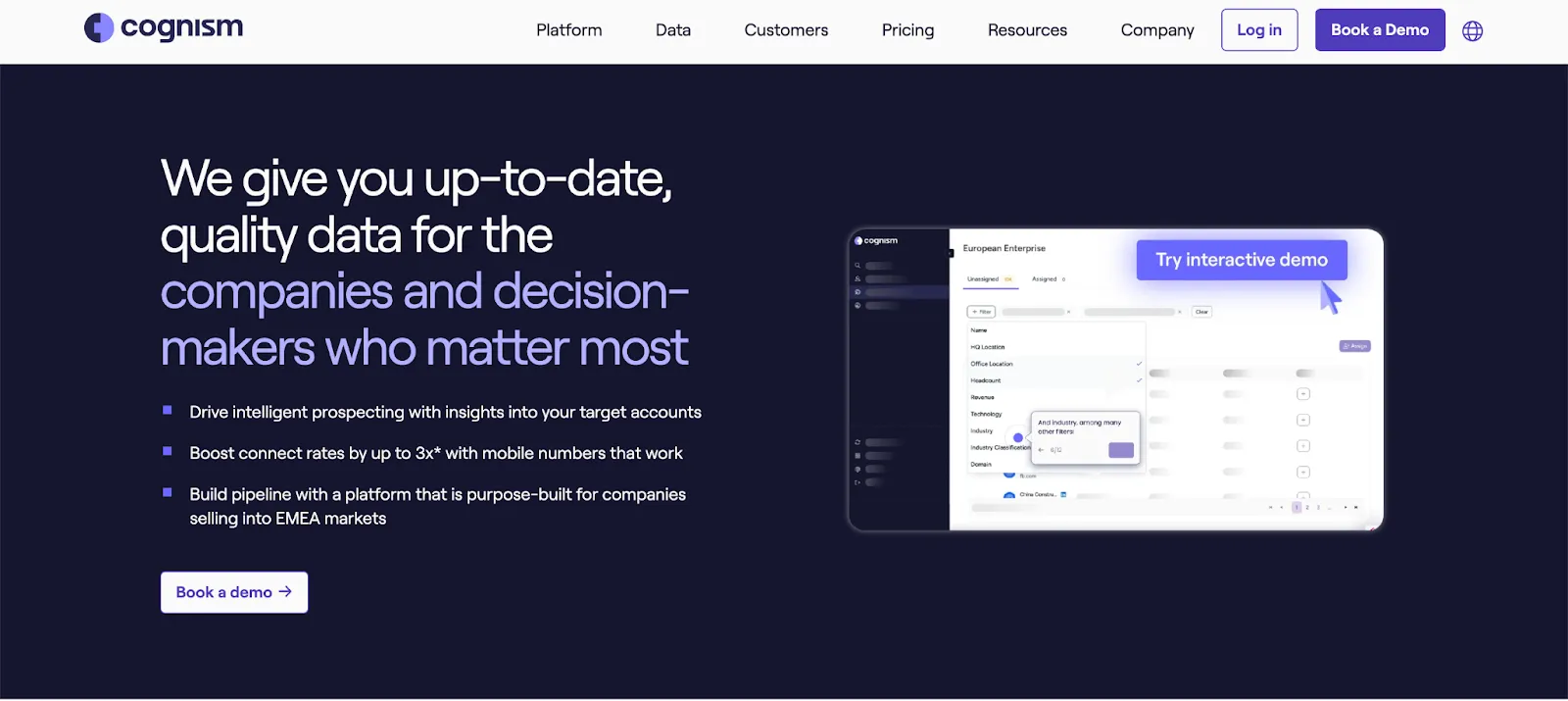



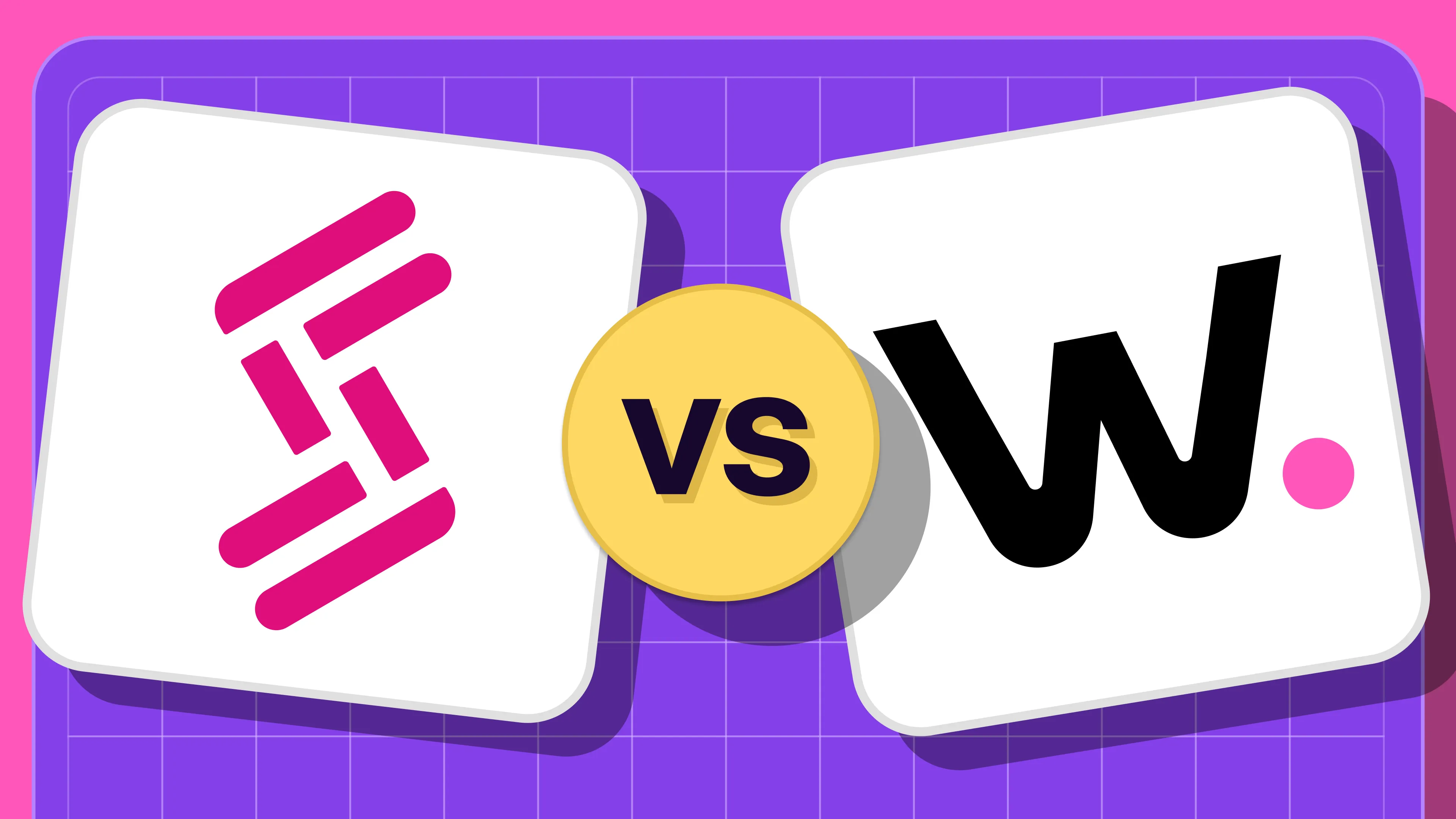
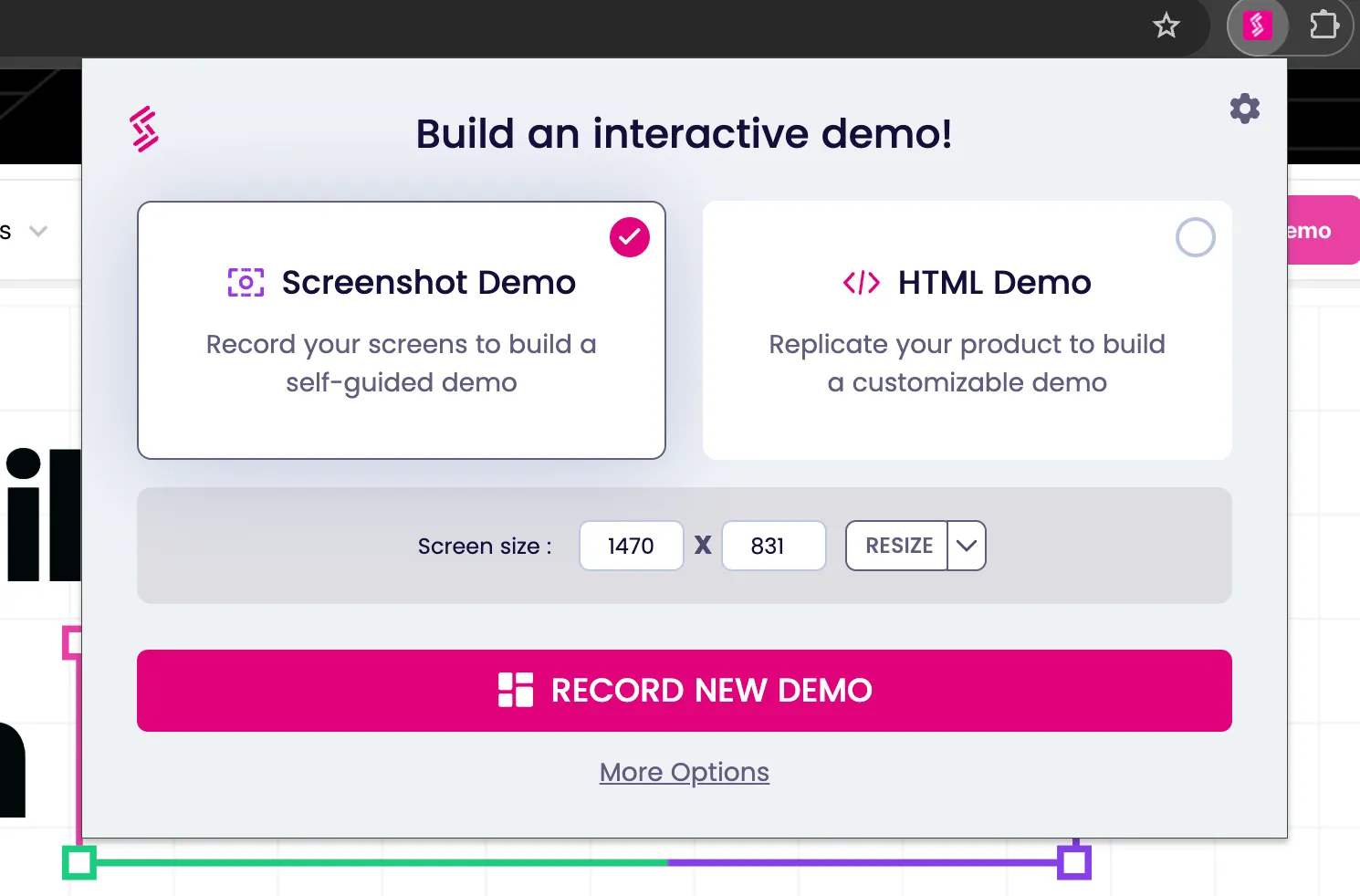

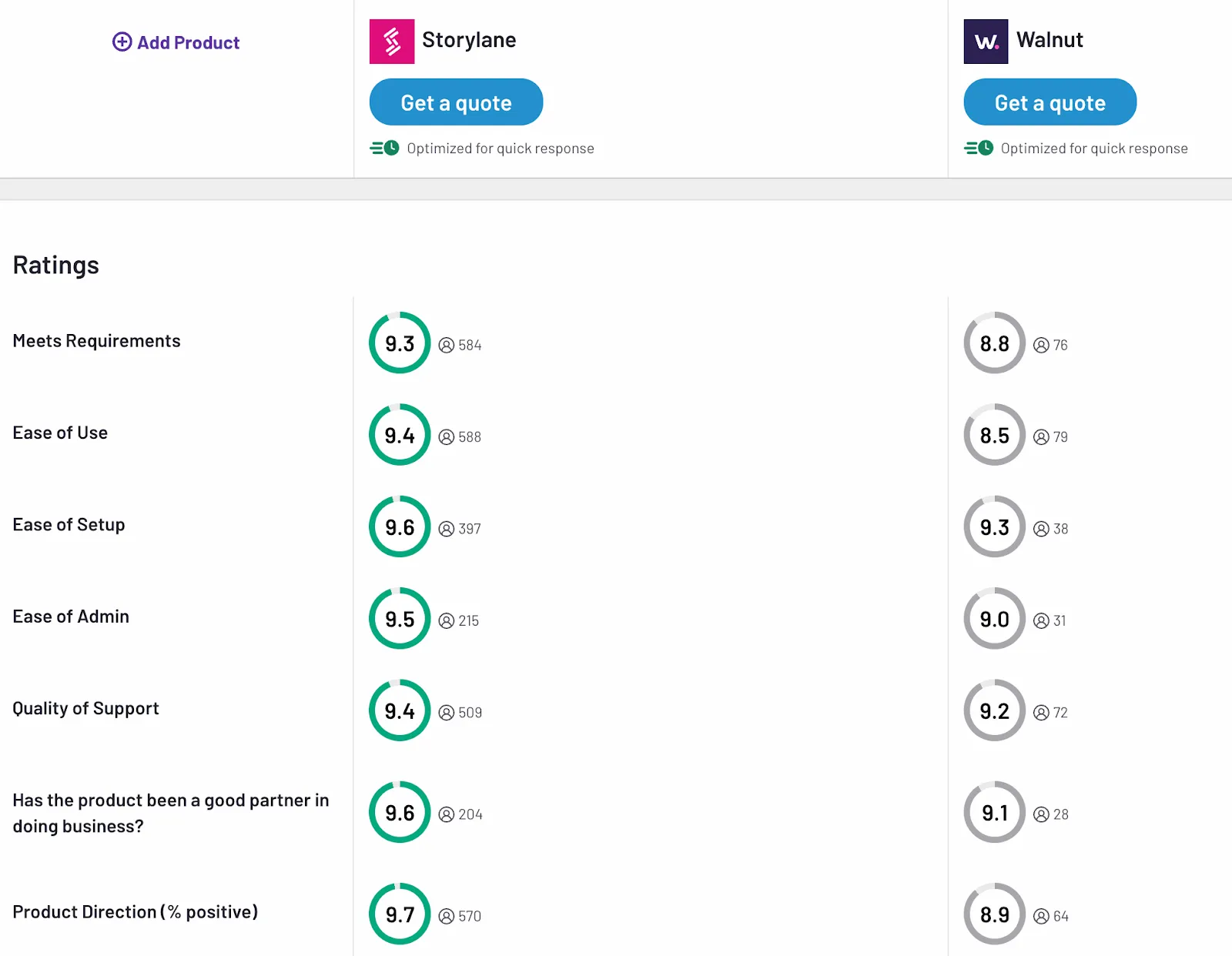
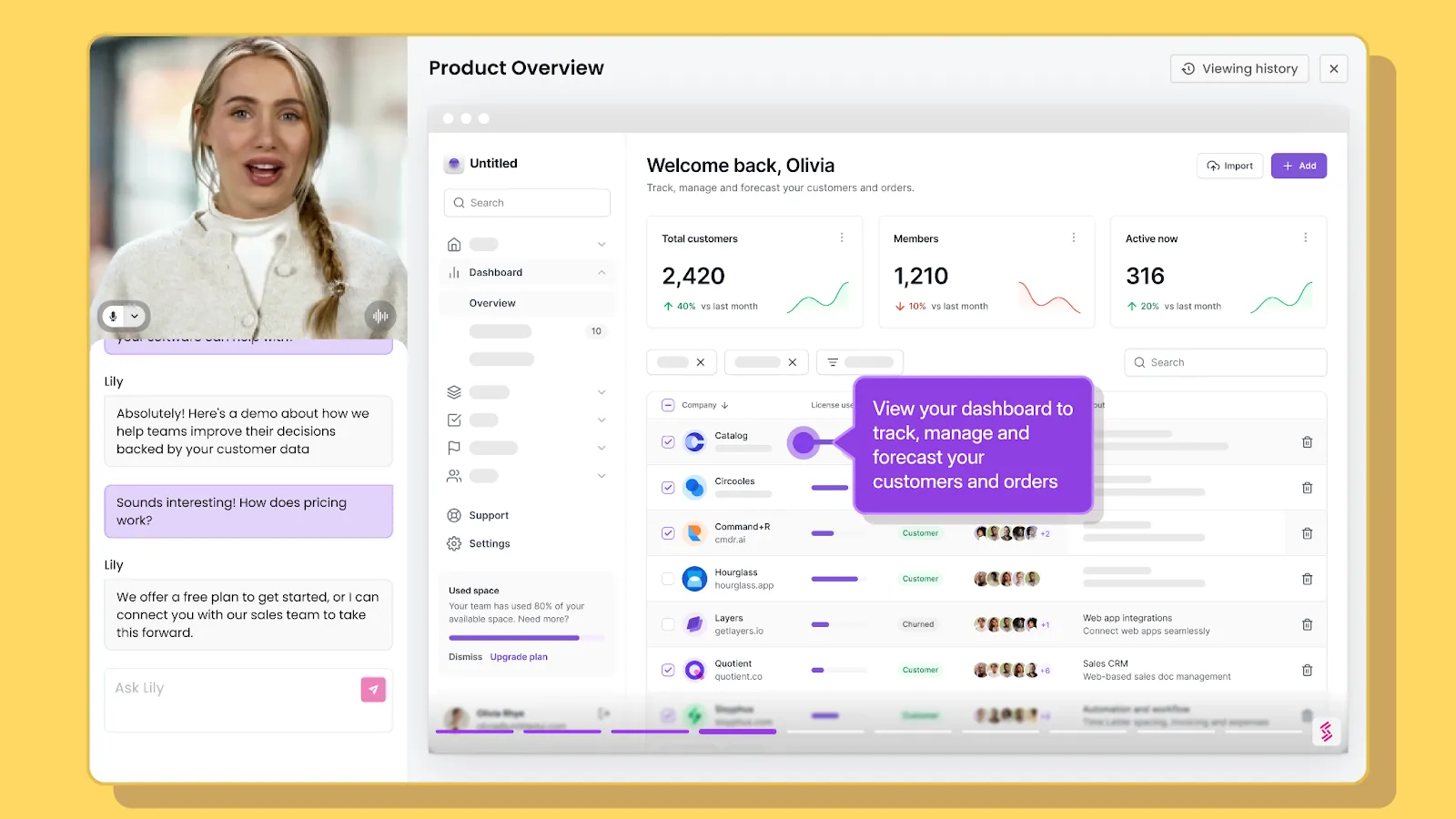







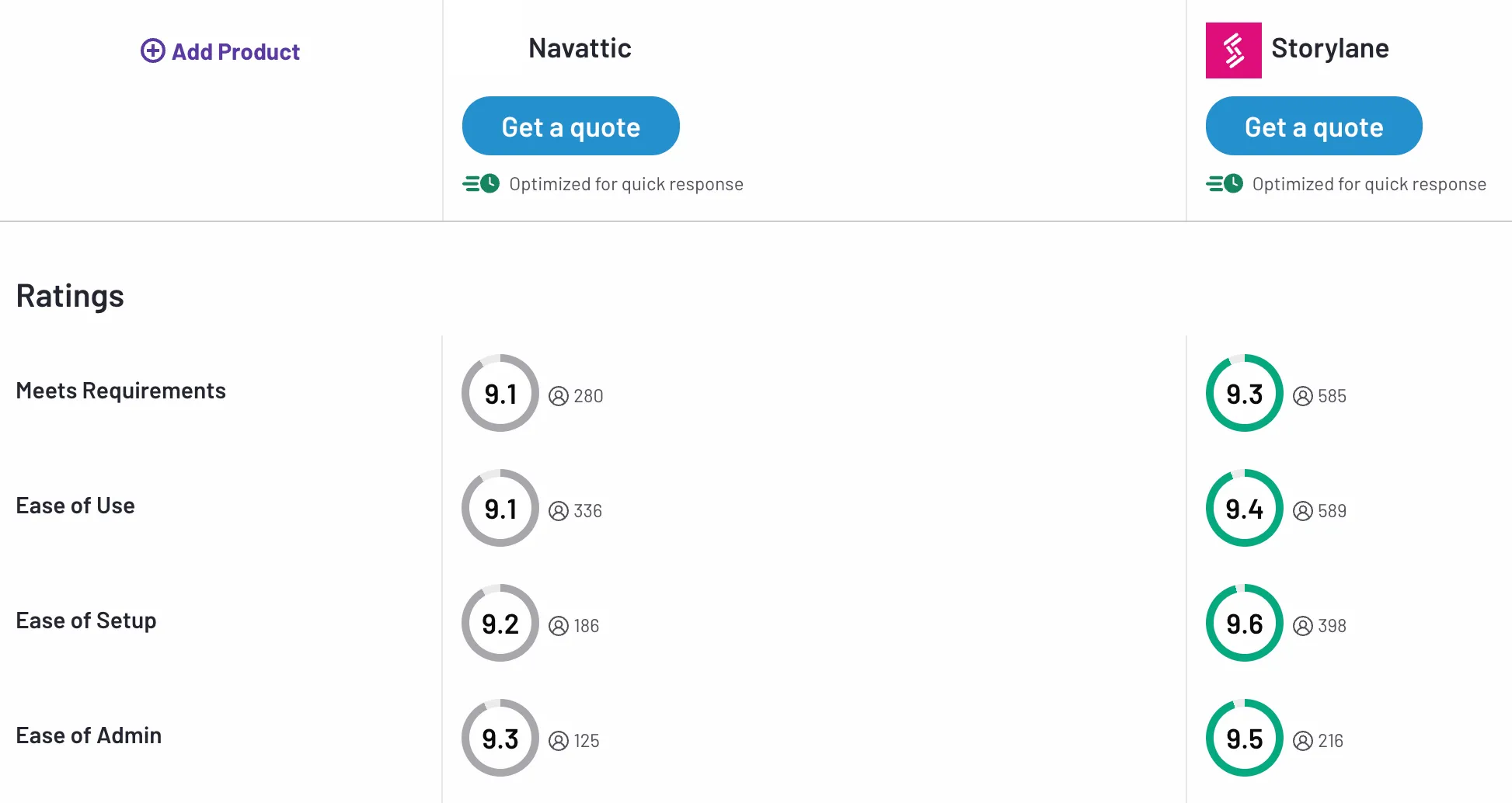

.svg)

.webp)